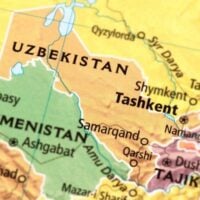Deadline: 26-Jul-23
The National Fish and Wildlife Foundation (NFWF) is offering competitive grants through the Conservation Partners Program to accelerate the voluntary adoption of regenerative agriculture principles and conservation practices on private working lands and encourages projects that foster participation by diverse local community members and community-based organizations.
Grant recipients will provide technical assistance to interested farmers and ranchers to develop management plans, design and implement best practices. This work enhances wildlife habitat, soil health, water quantity and quality, and carbon sequestration while providing important social and economic benefits to agricultural producers.
Priorities
- The Conservation Partners Program will fund projects that provide agricultural producers with technical assistance to adopt regenerative agriculture systems and conservation practices on their working lands. Grant recipients will hire or support field conservation professionals who will help producers develop and implement economically sound approaches that achieve positive environmental outcomes.
- Competitive projects will increase participation in farm bill programs as one way to advance regenerative agriculture principles. Some of these principles include:
- minimizing chronic disturbances to the soil and biological community;
- enhancing wildlife habitat;
- maximizing crop diversity;
- Keeping the soil covered;
- keeping a living root in the ground at all times;
- efficiently managing water resources;
- integrating livestock into agricultural systems.
- The Conservation Partners Program encourages projects that foster participation by diverse local community members and community-based organizations. Incorporating local input into project design, integrating traditional ecological knowledge, and working collaboratively with diverse partners toward optimal solutions can ensure alignment among individual producer objectives, broader community priorities, and desired conservation outcomes.
Funding Information
- Approximately $6.2 million in grant funding is available under this funding opportunity. Typical grant awards will range from $100,000 to $600,000, with an estimated average grant size of approximately $275,000.
- Duration: Grant period of performance will typically be three years following finalization of the grant agreement.
Eligible Projects
- The Conservation Partners Program will support projects that:
- Direct staff resources to help agricultural producers design and implement regenerative agriculture systems and practices.
- Foster community learning, relationship-building, and development of peer-to-peer networks to advance regional knowledge and adoption of regenerative agriculture systems and practices.
- Work with communities and producers to identify and overcome implementation barriers.
- Increase Farm Bill program participation and conservation practice implementation among agricultural producers, especially farmers and ranchers in the Historically Underserved and Special Emphasis categories.
- Generate environmental benefits, such as improvements to wildlife habitat, soil health, and water quantity and quality.
- Sequester and store carbon, reduce greenhouse gas emissions, and increase resilience to impacts of climate change.
- Promote conservation systems to complement and advance producer economic interests and operational efficiency.
- Equip agricultural producers with information and data management capabilities to access ecosystem service markets.
- Competitive projects will advance one or more of the following strategies:
- Crop management: Improve water quality and maximize soil carbon and wildlife values by increasing adoption of cover crops, reduced tillage, diversified crop rotations, perennial cropping systems, nutrient and pesticide management plans, precision agriculture, and other soil health practices.
- Grazing management: Promote plant growth above and below ground, improve wildlife habitat, and maximize soil carbon by establishing native grasses and optimizing stocking rates, livestock rotations, utilization rates, and plant rest and recovery.
- Irrigation improvement: Improve hydrology, in-stream flows, aquifer recharge, water conservation, and flood and drought resilience by increasing efficiency of on-farm irrigation practices and reducing agricultural runoff.
- Habitat enhancement: Enhance habitat values of working grasslands, field buffers, forests, wetlands, riparian zones, floodplains and other adjacent areas through native plantings, removal of invasive species, beneficial mowing, prescribed burning, fencing and other conservation practices.
Geographic Focus
- This funding opportunity will provide grants for projects that align geographically with the following program priority categories:
- Northern Great Plains/Prairie Pothole Region
- This geography includes the region of historic tallgrass, mixed grass, and shortgrass prairie spanning portions of Iowa, Minnesota, Montana, Nebraska, North Dakota, and South Dakota. Priority will be given to projects in the Prairie Pothole region of western Minnesota and eastern North and South. Key objectives for this category include:
- Improve soil health and maximize soil carbon on grazing lands and crop lands.
- Sustain and enhance conservation and economic values associated with working grasslands.
- Reduce nitrogen, phosphorus and sediment runoff to local waterways.
- Enhance habitat quality and connectivity for waterfowl, shorebirds, pollinators, and many other species that depend on the grassland–wetland complexes of the region.
- Priority strategies include: crop management, grazing management, and habitat enhancement. Under crop management, priority will be given to projects focused on lands with wheat in active rotation, particularly in North Dakota, South Dakota and Minnesota.
- This geography includes the region of historic tallgrass, mixed grass, and shortgrass prairie spanning portions of Iowa, Minnesota, Montana, Nebraska, North Dakota, and South Dakota. Priority will be given to projects in the Prairie Pothole region of western Minnesota and eastern North and South. Key objectives for this category include:
- Southern Great Plains
- This geography includes portions of Arkansas, Colorado, Iowa, Kansas, Missouri, Nebraska, New Mexico, Oklahoma, South Dakota, Texas, and Wyoming. Key objectives for this category include:
- Improve soil health and maximize soil carbon on crop lands and grazing lands.
- Sustain and enhance conservation and economic values associated with working grasslands.
- Reduce nitrogen, phosphorus, sediment, and pesticide runoff to local waterways.
- Conserve and sustainably manage limited water resources.
- Enhance habitat quality and connectivity for birds, pollinators, and other species that depend on grassland complexes in the region.
- Priority strategies include: crop management, grazing management, irrigation improvement, and habitat enhancement. Under crop management, priority will be given to projects focused on lands with wheat in active rotation, particularly in Kansas, Oklahoma and Colorado. Proposals that contribute to the goals of an established Sentinel Landscape will receive special consideration.
- This geography includes portions of Arkansas, Colorado, Iowa, Kansas, Missouri, Nebraska, New Mexico, Oklahoma, South Dakota, Texas, and Wyoming. Key objectives for this category include:
- Upper Mississippi River Basin
- This geography includes the NRCS’s Mississippi River Basin Healthy Watersheds Initiative (MRBI) states upstream of the Ohio River confluence with the Mississippi River. Priority will be given to projects focused within MRBI Focus Area Watersheds. Key objectives for this category include:
- Improve soil health and maximize soil carbon on crop lands, pastures, and other grazing lands.
- Reduce nitrogen, phosphorus and sediment runoff to local waterways.
- Enhance habitat for migratory birds, fish, and other aquatic species.
- Priority strategies include: crop management, grazing management, and habitat enhancement. Under crop management, priority will be given to projects on lands with corn in active rotation in Ohio. Proposals that contribute to the goals of an established Sentinel Landscape will also receive special consideration.
- This geography includes the NRCS’s Mississippi River Basin Healthy Watersheds Initiative (MRBI) states upstream of the Ohio River confluence with the Mississippi River. Priority will be given to projects focused within MRBI Focus Area Watersheds. Key objectives for this category include:
- Great Lakes Basin
- This geography includes the U.S. portion of Great Lakes watersheds. Key objectives for this category include:
- Improve soil health, water quality, and biodiversity.
- Engage landowners in conservation and regenerative agriculture planning and peer-to-peer learning.
- Reduce Farm Bill practice contracting and implementation backlog.
- Priority strategies include: grazing management, crop management, and habitat enhancement. Special consideration will be given to projects working to engage growers and support conventional and organic dairies in Michigan’s lower peninsula, the Lake Michigan watershed of Indiana and the western Lake Erie watershed of Indiana, Ohio and Michigan.
- This geography includes the U.S. portion of Great Lakes watersheds. Key objectives for this category include:
- Northern Great Plains/Prairie Pothole Region
Eligibility Criteria
- Eligible and Ineligible Entities
- Eligible applicants include non-profit 501(c) organizations, state government agencies, local governments, municipal governments, tribal governments and organizations, and educational institutions. To be competitive, applicant organizations must demonstrate capacity and experience commensurate with the scale of the project being proposed and the funding being requested.
- Individuals, federal government agencies, and for-profit entities are not eligible to apply for grant funding.
For more information, visit National Fish and Wildlife Foundation.









































